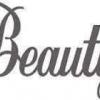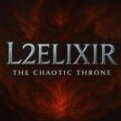[Advanced tutorial]Design a Professional Wildlife TV Show Poster
-
Posts
-
新产品!快来抢购独家新品,以最优价格购买! ➡带文件验证的 Facebook Business Manager (BM) | 绑定到已激活的 Business Manager 账户 | 限额 $50(第一天)+ $250(后续天数)| 价格从 $25 起 ➡在 Fragment.com 上验证的 Telegram 资料 | 账户通过真实文件验证 | 包含 Telegram 账户格式:TDATA + SESSION + JSON + 2FA + 密码 | 地区:MIX | 价格从 $30 起 ➡Telegram 哈萨克斯坦 +7 | 格式:TDATA + SESSION + JSON | 无垃圾邮件限制 | 2FA 启用 | 账户年龄:从 3 天起 | 价格从 $2.5 起 ➡Adobe Creative Cloud 订阅 7 天 / 30 天 / 3 个月 / 1 年(任选时长)| 所有应用和所有语言可用 | AI 功能 1000+ 积分 | 个人账户 | 价格从 $5 起 可通过网站或 Bot 在我们的商店购买! 有效链接: 数字商品商店(网站):进入 商店 Telegram Bot:进入 – 通过 Telegram 方便访问商店。 其他服务: Telegram Stars 购买 Bot:进入 – 快速且划算地购买 Telegram Stars。 SMM 面板:进入 – 推广您的社交媒体账户。 我们为您呈现当前购买我们产品和服务的促销和特别优惠列表: 1. 九月在我们的商店(网站、Bot)购买可使用优惠码 OCTOBER2025(8% 折扣)!首次购买也可使用优惠码:SOCNET(15% 折扣) 2. 获取 $1 商店余额或 10–20% 折扣 — 注册后按照格式发布用户名:“SEND ME BONUS, MY USERNAME IS…” — 发布在我们的论坛帖中! 3. 第一次 SMM 面板试用可获得 $1 — 只需在我们网站(Support)打开主题为 “Get Trial Bonus” 的工单。 4. 每周在我们的 Telegram 频道和 Stars 购买 Bot 中赠送 Telegram Stars! 新闻: ➡ Telegram 频道:https://t.me/accsforyou_shop ➡ WhatsApp 频道:https://chat.whatsapp.com/K8rBy500nA73z27PxgaJUw?mode=ems_copy_t ➡ Discord 服务器:https://discord.gg/y9AStFFsrh 联系方式与支持: ➡ Telegram:https://t.me/socnet_support ➡ WhatsApp:https://wa.me/79051904467 ➡ Discord:socnet_support ➡ ✉ 邮箱:solomonbog@socnet.store
-
新产品!快来抢购独家新品,以最优价格购买! ➡带文件验证的 Facebook Business Manager (BM) | 绑定到已激活的 Business Manager 账户 | 限额 $50(第一天)+ $250(后续天数)| 价格从 $25 起 ➡在 Fragment.com 上验证的 Telegram 资料 | 账户通过真实文件验证 | 包含 Telegram 账户格式:TDATA + SESSION + JSON + 2FA + 密码 | 地区:MIX | 价格从 $30 起 ➡Telegram 哈萨克斯坦 +7 | 格式:TDATA + SESSION + JSON | 无垃圾邮件限制 | 2FA 启用 | 账户年龄:从 3 天起 | 价格从 $2.5 起 ➡Adobe Creative Cloud 订阅 7 天 / 30 天 / 3 个月 / 1 年(任选时长)| 所有应用和所有语言可用 | AI 功能 1000+ 积分 | 个人账户 | 价格从 $5 起 可通过网站或 Bot 在我们的商店购买! 有效链接: 数字商品商店(网站):进入 商店 Telegram Bot:进入 – 通过 Telegram 方便访问商店。 其他服务: Telegram Stars 购买 Bot:进入 – 快速且划算地购买 Telegram Stars。 SMM 面板:进入 – 推广您的社交媒体账户。 我们为您呈现当前购买我们产品和服务的促销和特别优惠列表: 1. 九月在我们的商店(网站、Bot)购买可使用优惠码 OCTOBER2025(8% 折扣)!首次购买也可使用优惠码:SOCNET(15% 折扣) 2. 获取 $1 商店余额或 10–20% 折扣 — 注册后按照格式发布用户名:“SEND ME BONUS, MY USERNAME IS…” — 发布在我们的论坛帖中! 3. 第一次 SMM 面板试用可获得 $1 — 只需在我们网站(Support)打开主题为 “Get Trial Bonus” 的工单。 4. 每周在我们的 Telegram 频道和 Stars 购买 Bot 中赠送 Telegram Stars! 新闻: ➡ Telegram 频道:https://t.me/accsforyou_shop ➡ WhatsApp 频道:https://chat.whatsapp.com/K8rBy500nA73z27PxgaJUw?mode=ems_copy_t ➡ Discord 服务器:https://discord.gg/y9AStFFsrh 联系方式与支持: ➡ Telegram:https://t.me/socnet_support ➡ WhatsApp:https://wa.me/79051904467 ➡ Discord:socnet_support ➡ ✉ 邮箱:solomonbog@socnet.store
-
New Products! Hurry up and buy exclusive new arrivals at the best prices. ➡ Verified Facebook Business Manager (BM) with documents | Linked to an account with an active Business Manager | Limit $50 (first day) + $250 (next days) | Price from: $25 ➡ Verified Telegram profile on Fragment.com | Account verified with real documents | Includes Telegram account in TDATA + SESSION + JSON + 2FA + password format | GEO: MIX | Price from: $30 ➡ Telegram Kazakhstan +7 | Format: TDATA + SESSION + JSON | No spam-block | 2FA enabled | Age: from 3 days | Price from: $2.5 ➡ Adobe Creative Cloud subscription for 7 days / 30 days / 3 months / 1 year (duration of your choice) | All apps and all languages available | 1000+ credits for AI features | Personal account | Price from: $5 Buy in our store via website or bot! Active Links: Digital Goods Store (Website): Go Store Telegram Bot: Go – convenient access to the store via Telegram messenger. Other Services: Telegram Bot for purchasing Telegram Stars: Go – fast and profitable purchase of Telegram Stars. SMM Panel: Go – promote your social media accounts. We would like to present to you the current list of promotions and special offers for purchasing our products and services: 1. Promo code OCTOBER2025 (8% discount) for purchases in our store (Website, Bot) in September! You can also use the first-purchase promo code: SOCNET (15% discount) 2. Get $1 credited to your store balance or a 10–20% discount — simply write your username after registration on our website using the following format: “SEND ME BONUS, MY USERNAME IS…” — post it in our forum thread! 3. Get $1 for your first SMM Panel trial — just open a ticket titled “Get Trial Bonus” on our website (Support). 4. Weekly Telegram Stars giveaways in our Telegram channel and in our Stars purchasing bot! News: ➡ Telegram Channel: https://t.me/accsforyou_shop ➡ WhatsApp Channel: https://chat.whatsapp.com/K8rBy500nA73z27PxgaJUw?mode=ems_copy_t ➡ Discord Server: https://discord.gg/y9AStFFsrh Contacts & Support: ➡ Telegram: https://t.me/socnet_support ➡ WhatsApp: https://wa.me/79051904467 ➡ Discord: socnet_support ➡ ✉ Email: solomonbog@socnet.store
-
New Products! Hurry up and buy exclusive new arrivals at the best prices. ➡ Verified Facebook Business Manager (BM) with documents | Linked to an account with an active Business Manager | Limit $50 (first day) + $250 (next days) | Price from: $25 ➡ Verified Telegram profile on Fragment.com | Account verified with real documents | Includes Telegram account in TDATA + SESSION + JSON + 2FA + password format | GEO: MIX | Price from: $30 ➡ Telegram Kazakhstan +7 | Format: TDATA + SESSION + JSON | No spam-block | 2FA enabled | Age: from 3 days | Price from: $2.5 ➡ Adobe Creative Cloud subscription for 7 days / 30 days / 3 months / 1 year (duration of your choice) | All apps and all languages available | 1000+ credits for AI features | Personal account | Price from: $5 Buy in our store via website or bot! Active Links: Digital Goods Store (Website): Go Store Telegram Bot: Go – convenient access to the store via Telegram messenger. Other Services: Telegram Bot for purchasing Telegram Stars: Go – fast and profitable purchase of Telegram Stars. SMM Panel: Go – promote your social media accounts. We would like to present to you the current list of promotions and special offers for purchasing our products and services: 1. Promo code OCTOBER2025 (8% discount) for purchases in our store (Website, Bot) in September! You can also use the first-purchase promo code: SOCNET (15% discount) 2. Get $1 credited to your store balance or a 10–20% discount — simply write your username after registration on our website using the following format: “SEND ME BONUS, MY USERNAME IS…” — post it in our forum thread! 3. Get $1 for your first SMM Panel trial — just open a ticket titled “Get Trial Bonus” on our website (Support). 4. Weekly Telegram Stars giveaways in our Telegram channel and in our Stars purchasing bot! News: ➡ Telegram Channel: https://t.me/accsforyou_shop ➡ WhatsApp Channel: https://chat.whatsapp.com/K8rBy500nA73z27PxgaJUw?mode=ems_copy_t ➡ Discord Server: https://discord.gg/y9AStFFsrh Contacts & Support: ➡ Telegram: https://t.me/socnet_support ➡ WhatsApp: https://wa.me/79051904467 ➡ Discord: socnet_support ➡ ✉ Email: solomonbog@socnet.store
-
By Constellation · Posted
State-of-the-art сryptocurrency mixer 💰 Our service does not "mix transactions," but immediately issues CLEAN cryptocurrency with low AML. The principle is simple: you give us your coins, we return our clean coins to you, without any traces or unnecessary procedures. ✔ Complete confidentiality. No "pseudo-mixers" — at the exit, a transaction without traces. ✔ Flexible commission. From 2% to 6%, depending on the destination and amount. ✔ Popular currencies: LTC, BTC, ETH, USDT, BNB, XRP, XMR, TRX. Others available upon request. ✔ Ready accounts ✔ Business accounts ✅ Account Qonto Business 🗂️ 2 in stock ✅ Account Finom Business 🗂️ 1 in stock ✅ Account PayPal Business 🗂️ 1 in stock ✅ Account Wallester Business 🗂️ 1 in stock ✅ Account Stripe Business 🗂️ 1 in stock ✅ Account Wittix Business 🗂️ 2 in stock ✅ Account Ebay com Seller US|EU, new 🗂️ 2 in stock ✅ Account Blackcatcard Business 🗂️ 2 in stock ✅ Account Mistertango Business 🗂️ 1 in stock ✅ Account Payset Business 🗂️ 1 in stock ✅ Account Wise Business 🗂️ 1 in stock ✅ Account Revolut Business 🗂️ 2 in stock Payments-system / Crypto-Exchange ✅ Account AlchemyPay 🗂️ 1 in stock ✅ Account Astropay 🗂️ 1 in stock ✅ Account 4x4 io 🗂️ 1 in stock ✅ Account Bunq 🗂️ 2 in stock ✅ Account Bilderlings 🗂️ 1 in stock ✅ Account BitPay 🗂️ 1 in stock ✅ Account Bitinvestor / swapped 🗂️ 1 in stock ✅ Account Bitmex 🗂️ 1 in stock ✅ Account Bitsa 🗂️ 3 in stock ✅ Account Blackcatcard 🗂️ 1 in stock ✅ Account Btcdirect 🗂️ 1 in stock ✅ Account BBVA 🗂️ 1 in stock ✅ Account Binance 🗂️ 2 in stock ✅ Account Bitget 🗂️ 1 in stock ✅ Account Blackwell Global 🗂️ 1 in stock ✅ Account Brighty app 🗂️ 4 in stock ✅ Account Bankera 🗂️ 1 in stock ✅ Account Coinbase card 🗂️ 1 in stock ✅ Account Coinfinity 🗂️ 1 in stock ✅ Account Capitalist 🗂️ 2 in stock ✅ Account CoinW 🗂️ 1 in stock ✅ Account Coinmetro 🗂️ 1 in stock ✅ Account Coinpayments 🗂️ 1 in stock ✅ Account Cryptomus 🗂️ 1 in stock ✅ Account Curve 🗂️ 3 in stock ✅ Account Cryptopay 🗂️ 1 in stock ✅ Account Egera 🗂️ 1 in stock ✅ Account e PN 🗂️ 1 in stock ✅ Account FasterPay 🗂️ 1 in stock ✅ Account Finci 🗂️ 1 in stock ✅ Account fillit eu 🗂️ 1 in stock ✅ Account Gate 🗂️ 3 in stock ✅ Account Grey 🗂️ 1 in stock ✅ Account HTX (Huobi) 🗂️ 1 in stock ✅ Account IN1 🗂️ 1 in stock ✅ Account Imagenpay 🗂️ 1 in stock ✅ Account ICard 🗂️ 1 in stock ✅ Account IPRoyal 🗂️ 1 in stock ✅ Account Kraken 🗂️ 3 in stock ✅ Account Kucoin 🗂️ 1 in stock ✅ Account Kauri Finance 🗂️ 1 in stock ✅ Account Kriptomat 🗂️ 1 in stock ✅ Account Luno 🗂️ 1 in stock ✅ Account LuxonPay 🗂️ 1 in stock ✅ Account MEXC 🗂️ 1 in stock ✅ Account MyBrocard 🗂️ 1 in stock ✅ Account Moonpay 🗂️ 2 in stock ✅ Account Monzo 🗂️ 1 in stock ✅ Account moneyjar world 🗂️ 1 in stock ✅ Account Naga Pay 🗂️ 1 in stock ✅ Account Nash 🗂️ 1 in stock ✅ Account Nebeus 🗂️ 1 in stock ✅ Account Nexo 🗂️ 1 in stock ✅ Account Nearpay 🗂️ 2 in stock ✅ Account Neteller 🗂️ 1 in stock ✅ Account N26 🗂️ 1 in stock ✅ Account OKX 🗂️ 1 in stock ✅ Account PayDo 🗂️ 1 in stock ✅ Account Paypal 🗂️ 3 in stock ✅ Account Paysera 🗂️ 1 in stock ✅ Account PST 🗂️ 1 in stock ✅ Account Paybis 🗂️ 1 in stock ✅ Account Payoneer 🗂️ 1 in stock ✅ Account Paysafecard 🗂️ 2 in stock ✅ Account Paytend 🗂️ 1 in stock ✅ Account Quppy 🗂️ 1 in stock ✅ Account RedotPay 🗂️ 1 in stock ✅ Account Ramp 🗂️ 1 in stock ✅ Account Revolut 🗂️ 1 in stock ✅ Account Santander 🗂️ 1 in stock ✅ Account Spendl 🗂️ 1 in stock ✅ Account Skrill 🗂️ 1 in stock ✅ Account Swapin 🗂️ 3 in stock ✅ Account Trustee Plus 🗂️ 1 in stock ✅ Account Valora 🗂️ 1 in stock ✅ Account Volet 🗂️ 1 in stock ✅ Account W1TTY 🗂️ 1 in stock ✅ Account Wallet Telegram 🗂️ 1 in stock ✅ Account Weststein 🗂️ 1 in stock ✅ Account Wirex 🗂️ 1 in stock ✅ Account Wise 🗂️ 4 in stock ✅ Account Whitebit 🗂️ 1 in stock ✅ Account Wittix 🗂️ 1 in stock ✅ Account XGo 🗂️ 1 in stock
-
-
Topics











Recommended Posts
Create an account or sign in to comment
You need to be a member in order to leave a comment
Create an account
Sign up for a new account in our community. It's easy!
Register a new accountSign in
Already have an account? Sign in here.
Sign In Now